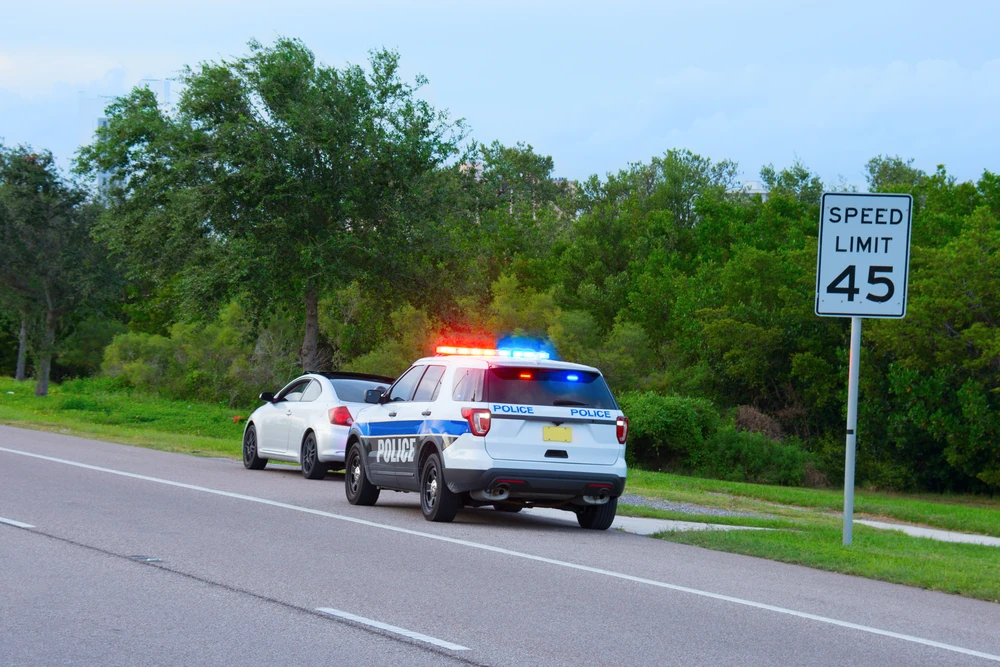
Vehicle & Traffic Law 1144-a(a)
Not to be confused with VTL 1144(a), VTL 1144-ab, or VTL 1144-ad.
VTL 1144-a(a) is a relatively new law that many drivers are not aware of. If you are driving in the right lane on a highway and there is an emergency vehicle on the right shoulder with its lights on, you must move to the center lane or left lane. If moving over to the left is not possible, you must slow down considerably. Pleading guilty or being found guilty of this violation will result in 2 points on your New York driving record.
The relevant wording of the statute is as follows:
Every operator of a motor vehicle shall exercise due care to avoid colliding with an authorized emergency vehicle which is parked, stopped or standing on the shoulder or any portion of such highway and such authorized emergency vehicle is displaying one or more red or combination red and white lights pursuant to the provisions of paragraph two of subdivision forty-one of section three hundred seventy-five of this chapter. For operators of motor vehicles on parkways or controlled access highways, such due care shall include, but not be limited to, moving from a lane which contains or is immediately adjacent to the shoulder where such authorized emergency vehicle displaying one or more red or combination red and white lights pursuant to the provisions of paragraph two of subdivision forty-one of section three hundred seventy-five of this chapter is parked, stopped or standing to another lane, provided that such movement otherwise complies with the requirements of this chapter including, but not limited to, the provisions of sections eleven hundred ten of this title and eleven hundred twenty-eight of this title.
Disputing a VTL § 1144-a(a) Ticket
In the typical scenario where a ticket is issued for this violation, a police officer is issuing a speeding ticket on the side of the road and notices that a passing car does not move over. The officer then proceeds to follow the passing car and give the passing driver a ticket. Sometimes there are two police cars, one giving a ticket and the other is just looking for cars that do not move over. In a third scenario, there is just one police officer, not pulling anyone over, but sitting on the side of the road with its lights on looking for a driver that will not pull over. Note, that motorists are obligated to move over as long as there is a police vehicle with lights on. It does not matter if the officer is in the process of dealing with another car or doing nothing.
In our experience, this ticket is often issued to the otherwise safest driver. The driver that almost never speeds and almost never strays from the right-hand lane. However, this ticket can still be hard to get reduced if not handled properly. This law was specifically enacted for the safety of police officers. Some officers take this violation personally and will not allow for any reduction or any plea negotiations for this violation.
Benjamin Goldman Law Office
The attorneys at the Benjamin Goldman Law Office have been successful in getting this specific charge reduced or dismissed. There are several defenses to the charge that we have utilized in the past on behalf of our clients. Our firm helps motorists in all areas of New York State, from Tonawanda to Brooklyn. Feel free to get in touch with us about your specific 1144-a(a) violation. We provide all motorists with a free consultation.
Other Traffic Violations We Handle
If you were harmed by a motorist who failed to move over for an emergency vehicle, you can contact the Sternberg Injury Law Firm to review your options
Disclaimer: All the content of this website has been prepared by Benjamin Goldman Law Office PC for informational purposes only and does not constitute legal advice. The information on this website shall not be construed as an offer to represent you, nor is it intended to create, nor shall the receipt of such information constitute, an attorney-client relationship. Our hope is that you will find the information useful and informative, and we would be happy to communicate with you and answer any questions you may have about our legal services. Readers should not act upon the information on this website, or decide not to act based upon the information on this website, without first seeking appropriate professional counsel from an attorney licensed in the home state of the drivers license of the person who received the relevant traffic citation.